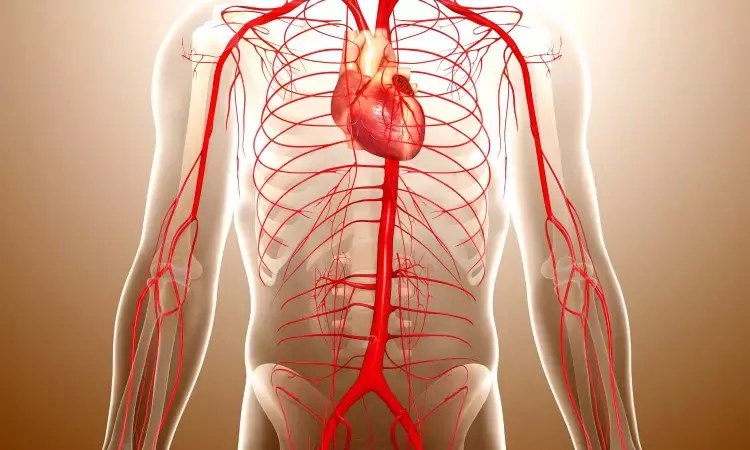- Home
- Medical news & Guidelines
- Anesthesiology
- Cardiology and CTVS
- Critical Care
- Dentistry
- Dermatology
- Diabetes and Endocrinology
- ENT
- Gastroenterology
- Medicine
- Nephrology
- Neurology
- Obstretics-Gynaecology
- Oncology
- Ophthalmology
- Orthopaedics
- Pediatrics-Neonatology
- Psychiatry
- Pulmonology
- Radiology
- Surgery
- Urology
- Laboratory Medicine
- Diet
- Nursing
- Paramedical
- Physiotherapy
- Health news
- Fact Check
- Bone Health Fact Check
- Brain Health Fact Check
- Cancer Related Fact Check
- Child Care Fact Check
- Dental and oral health fact check
- Diabetes and metabolic health fact check
- Diet and Nutrition Fact Check
- Eye and ENT Care Fact Check
- Fitness fact check
- Gut health fact check
- Heart health fact check
- Kidney health fact check
- Medical education fact check
- Men's health fact check
- Respiratory fact check
- Skin and hair care fact check
- Vaccine and Immunization fact check
- Women's health fact check
- AYUSH
- State News
- Andaman and Nicobar Islands
- Andhra Pradesh
- Arunachal Pradesh
- Assam
- Bihar
- Chandigarh
- Chattisgarh
- Dadra and Nagar Haveli
- Daman and Diu
- Delhi
- Goa
- Gujarat
- Haryana
- Himachal Pradesh
- Jammu & Kashmir
- Jharkhand
- Karnataka
- Kerala
- Ladakh
- Lakshadweep
- Madhya Pradesh
- Maharashtra
- Manipur
- Meghalaya
- Mizoram
- Nagaland
- Odisha
- Puducherry
- Punjab
- Rajasthan
- Sikkim
- Tamil Nadu
- Telangana
- Tripura
- Uttar Pradesh
- Uttrakhand
- West Bengal
- Medical Education
- Industry
Hypertriglyceridemia Linked to Abdominal Aortic Aneurysm Risk: Study

USA: Preclinical research published in Circulation suggests that hypertriglyceridemia plays a significant role in the development and rupture of abdominal aortic aneurysms (AAA).
AAA, a potentially fatal condition characterized by the dilation and rupture of the abdominal aorta, currently lacks effective pharmacological treatment. The study, led by Dr. Yaozhong Liu and colleagues from the University of Michigan Medical Center, aimed to explore the controversial and previously unclear link between triglyceride levels and AAA pathogenesis.
Using Mendelian randomization, the researchers analyzed genetic, proteomic, and metabolomic data to assess the causal role of lipid-related pathways in AAA risk. Their findings revealed a strong association between elevated triglyceride-rich lipoproteins and increased susceptibility to AAA. Experimental models involving mice with different degrees of hypertriglyceridemia—such as Lpl-deficient, Apoa5-deficient, and human APOC3 transgenic mice—provided further evidence supporting this link.
The following were the key findings of the study:
- In the angiotensin II–induced AAA model, mice with severe hypertriglyceridemia, especially those lacking Lpl, showed a high rate of aortic rupture.
- Apoa5-deficient mice exhibited rapid progression of abdominal aortic aneurysm (AAA).
- Human APOC3 transgenic mice developed both aortic dissection and rupture.
- The severity of outcomes was directly proportional to triglyceride concentrations, indicating a dose-dependent effect.
- Elevated triglycerides and palmitate impaired the maturation of lysyl oxidase (LOX), an enzyme essential for extracellular matrix stability.
- Reduced LOX activity weakened the aortic wall, facilitating aneurysm formation.
- Local restoration of LOX expression in the aorta counteracted the aneurysm-promoting effects of hypertriglyceridemia, underscoring its key role in AAA pathogenesis.
To evaluate potential therapeutic strategies, the team administered an antisense oligonucleotide (ASO) targeting angiopoietin-like protein 3 (ANGPTL3), a liver-derived regulator of triglyceride metabolism. This intervention effectively reduced triglyceride levels and significantly slowed AAA progression in both human APOC3 transgenic and Apoe-deficient mice.
The study emphasizes that managing triglyceride-rich lipoproteins may represent a viable therapeutic avenue for AAA. It also highlights the promise of ASO therapy against ANGPTL3 as a targeted approach to mitigate AAA risk, particularly in individuals with a genetic predisposition.
Despite its robust findings, the study acknowledged some limitations. The extreme hypertriglyceridemia observed in certain animal models may not fully reflect human conditions, and concurrent changes in cholesterol levels could confound interpretations. Furthermore, while palmitate's role in LOX inhibition is clear, the direct evidence of its accumulation in the aorta is still lacking.
"The comprehensive analysis strengthens the understanding of hypertriglyceridemia as a critical factor in AAA development and rupture. The findings emphasize the need for further experimental and clinical research to develop triglyceride-lowering strategies as potential interventions for this life-threatening vascular disease," the authors concluded.
Reference:
https://doi.org/10.1161/CIRCULATIONAHA.125.074737
Dr Kamal Kant Kohli-MBBS, DTCD- a chest specialist with more than 30 years of practice and a flair for writing clinical articles, Dr Kamal Kant Kohli joined Medical Dialogues as a Chief Editor of Medical News. Besides writing articles, as an editor, he proofreads and verifies all the medical content published on Medical Dialogues including those coming from journals, studies,medical conferences,guidelines etc. Email: drkohli@medicaldialogues.in. Contact no. 011-43720751


